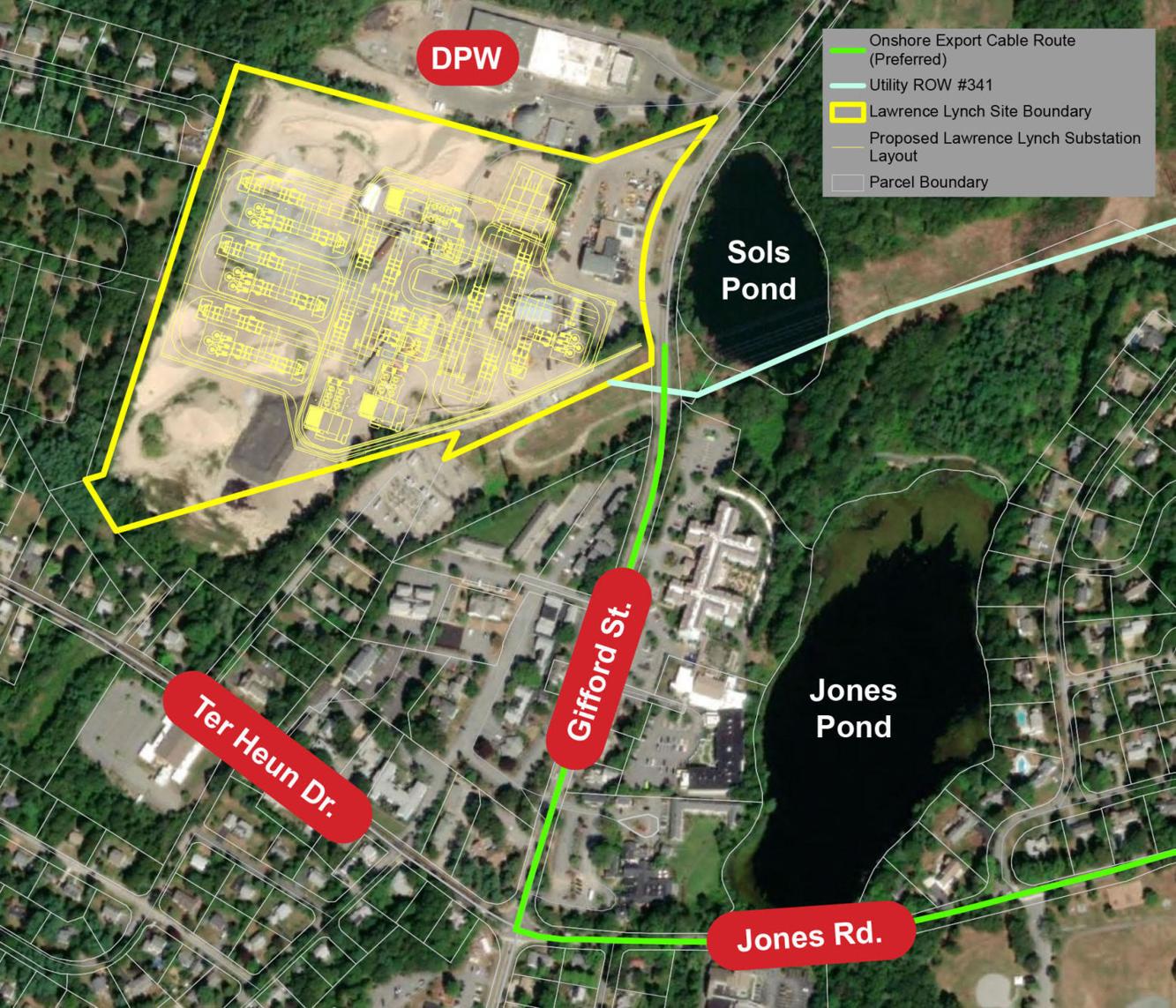 Mayflower Wind’s substation would be located at the Lawrence- Lynch property on Gifford Street.
Mayflower Wind’s substation would be located at the Lawrence- Lynch property on Gifford Street.
The April 15, 2022 Falmouth Enterprise published the following article by Eric T. Turkington on page 4 of the printed edition.
Mayflower Wind’s offshore wind energy turbines 26 miles south of Martha’s Vineyard clearly provide a benefit for the planet, producing 800 megawatts of electricity without carbon emissions from coal, fuel oil or natural gas. It’s also clearly a benefit for future electric utility ratepayers—a wholesale price of 5.8 cents per kilowatt-hour in 2019 dollars, including all transmission costs.
Mayflower proposes to have its transmission cables make landfall at Falmouth Heights beach, and the potential health effects of a high-voltage electric current running through a highly dense seasonal population is an issue there. The practical effect of digging up the Heights ballfield or Worcester Park (which was only recently dug up for the Little Pond sewer project) is also on residents’ minds.
But to get all this electricity from the Heights landfall to the New England grid and its ultimate users, Mayflower needs more from Falmouth than a landfall site. It needs a substation site—a very large one. Look at the existing NSTAR substation at the corner of Sandwich and Ashumet roads. Now imagine a similar installation 18 times larger—26 acres, almost the size of Falmouth Mall.
Mayflower needs to construct a substation whose maximum size would be that large, composed of a vast array of circuit breakers, switchgear, shunt reactors, instrumentation, overvoltage protection and transformers.
Mayflower has two Falmouth sites in mind.
Its preferred site is the 27.3-acre Lawrence-Lynch asphalt aggregate plant location on Gifford Street. Abutters to this property include the town DPW, Oak Grove Cemetery, Homeport, and homes on Rogers Road, Stephens Lane and Jones Road.
Mayflower notes the substation “may emit offensive noise/vibrations,” and plans to offer “noise mitigation strategies such as low noise transformers, enclosing certain substation components, and sound barriers.” As of this writing Mayflower is still in discussions with Lawrence-Lynch about acquiring this site.
Mayflower’s second choice for a substation is eight miles north of the Heights, a mostly treeless 33.6-acre parcel owned by Cape Cod Aggregates used for sand and gravel processing on the north side of Thomas B. Landers Road near the Blacksmith Shop Road intersection.
This parcel has a few residential abutters and is in the town’s water resource protection district. The proposed substation will use dielectric fluids, a hazardous material, to cool its electrical components, and that is a concern. Mayflower does hold an option on this property.
When Barnstable negotiated its Host Community Agreement (HCA) with Vineyard Wind in 2018, it included guarantees around keeping dielectric fluid out of the groundwater, no construction near the beach from April 30 to September 15, payments of $640,000 to the town for 25 years totaling $16 million, $80,000 for bathhouse reconstruction, and repaving the town beach parking lot.
Falmouth Town Hall has been in negotiations with Mayflower Wind since October 2020. Falmouth’s Host Community Agreement should include everything in Barnstable’s. In addition, the final agreement should include specific mitigation measures—recommended by experts working for the town, not for Mayflower—addressing any potential noise, odor, vibrations, visual and environmental impacts on either site.
This mammoth installation, whether located in our town center or above our aquifer, deserves a lot more attention than it has received so far. Nothing of this industrial scale currently exists in town, and once it is in place, it will be here forever.
